Palenque – The Ancient Mayan City
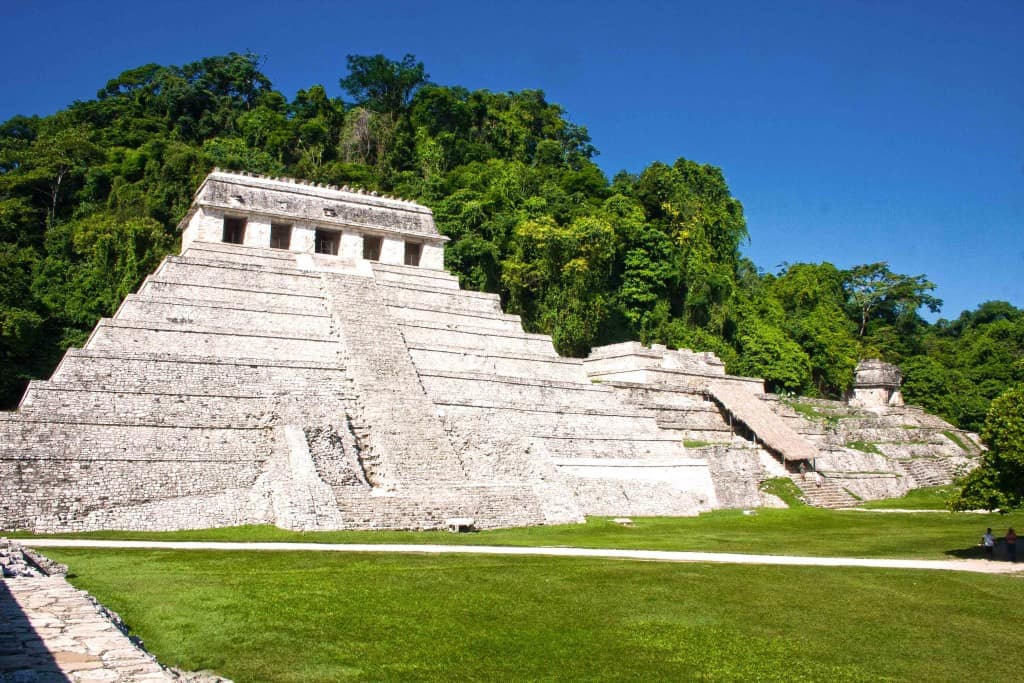
“Stone Buildings”
You never forget your fist visit to Palenque. Or second. Exploring the majestic pyramids sprouting from a clearing in the deep Chiapas jungle is a religious experience. People talk in hushed voices as they slowly saunter between the ancient structures. Reading Lonely Planet or Frommer’s travel guides, they whisper, take a picture or two with their Canon or Kodak and then just stare in awe at the magnificent structures and contemplate the ancient civilization that planned and created this city.
Unlike most ancient sites, Palenque is situated in deep jungle on the base of the Sierra Madre Mountains. You understand immediately and picture the Catherwood illustrations of the jungle taking back the city once it was abandoned. The vines are Tarzan-like with a diameter of a small dinner plate with leaves reaching 6 to 10 feet across. The jungle appears waiting to cover her secret again at any time.
The best time to visit Palenque is first thing in the morning. The humid air is as light as it will be all day and the light is a special warm glow for photographers. The morning is one of the least crowded times and makes your walk a sacred solitary experience as you explore the ruins. Your mind can drift and imagine the social and political life in this important Mayan center that thrived from 600 and 800 AD.
You should drive or take a taxi up the mountain to the old entrance. There is a limited parking lot and a throng of young boys who claim to watch your car for you. There are vendors of all sorts selling brochures and booklets, suntan lotion, film and other tourist articles. The ticket office is clearly marked and after paying the $7 admission you cross through the turn-style and enter the grounds.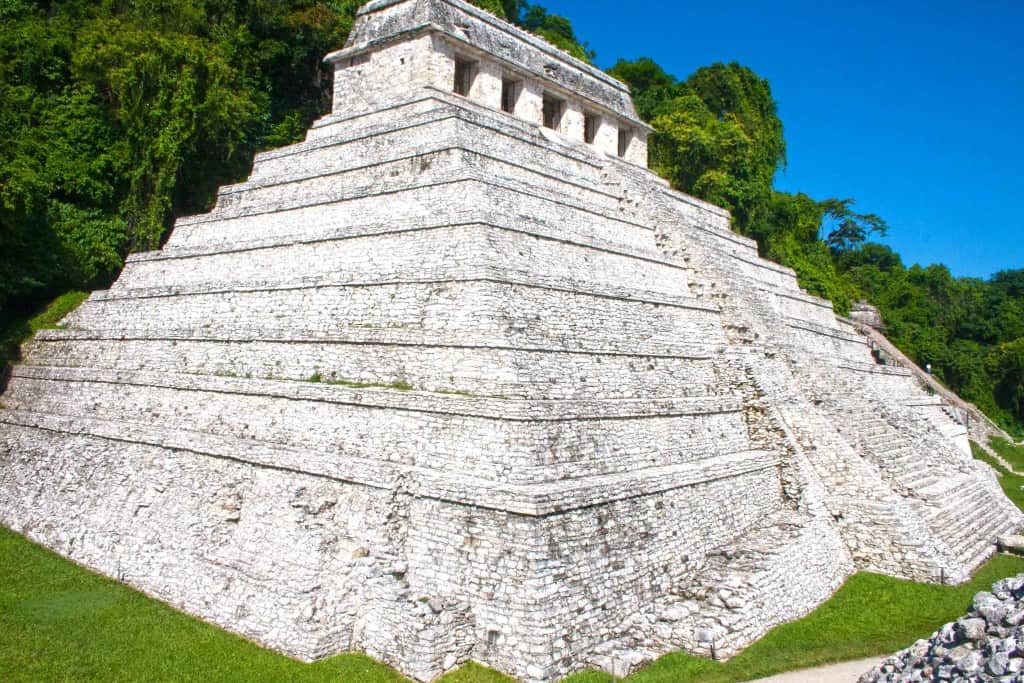
You then walk along and up a stone pathway towards the ruins. The trees and jungle mass provides shade from the morning sun and you hear small awaking sounds of birds and other creatures mumble in the bush. It is exciting and the anticipation is overwhelming as you quickly but silently follow the path. Suddenly the walkway opens up and reveals the first wide glimpse of the magnificent lost city.
Palenque is not the City’s real name; that has so far been lost too. The name Palenque means “Stone buildings” in an ancient dialect that loosely is translated in Spanish to mean “fortress or fortification.” The ruins were named after the nearby town of Santo Domingo Del Palenque. Some also interpret the Mayan name to mean – Jaguar Sun – the underworld where the sun sets to the realm of the jaguar.
Your first view of this mysterious city is a wall of pyramids, 3 massive stone structures, edged into a small ridge with lush tropical vegetation flanking the rear. The closest is the Temple of the Skull (or Temple 12) It is named after the skull relief adorned at the bottom. You can still walk up this structure and enjoy the view downhill of the lush Tabasco plains at the foot of the city.
The next structure over, Temple 13, is cordoned off and you cannot climb it due to the current archeological work. They have found a secret door leading to an interior room protecting a stone tomb of an adorned body female body covered in cinnabar; dubbed by Archeologists now as the “Red Queen.” DNA and other tests are currently being performed to investigate her lineage. It is very unusual for a Mayan Pyramid to contain a crypt. Palenque has two.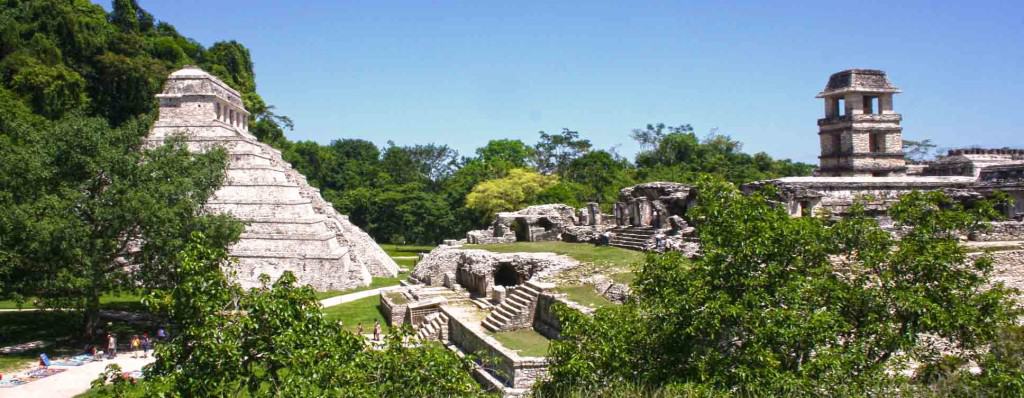
The third structure is the one that has received the most attention; Temple of the Inscriptions, which houses the tomb of King Pacal the Supreme ruler of Palenque from 614 to 683 AD. The temple is named after the highly decorated tomb housed inside with hieroglyphic inscriptions. These inscriptions have partially been deciphered and have led to the unraveling many of the mysteries of the pre-Hispanic Mayan people. They document battles and alliances, royal lineages as well as social and economic power structures.
This pyramid is similar to those in Egypt because it was made with stone to support the internal passage and tunnel to the tomb. Other Mayan pyramids are generally only covered with stone, with earth and rubble interiors. The sarcophagus or tomb lid is carved with a picture of King Pacal wearing an elaborate head-dress. The now widely debunked book, Chariots of the Gods, written by Erich von Däniken and published in the 1970’s speculated that Pacal was an extraterrestrial or astronaut; a theory that is snickered at by most archeologists today. Wild speculation, complete fabrication of truths and pure fiction is partly produced by the pure sense of wonder that the site and the tomb in particular imparts on the visitor. We can forgive the author; the magic of the site leads the imagination to speculation and things both past and present.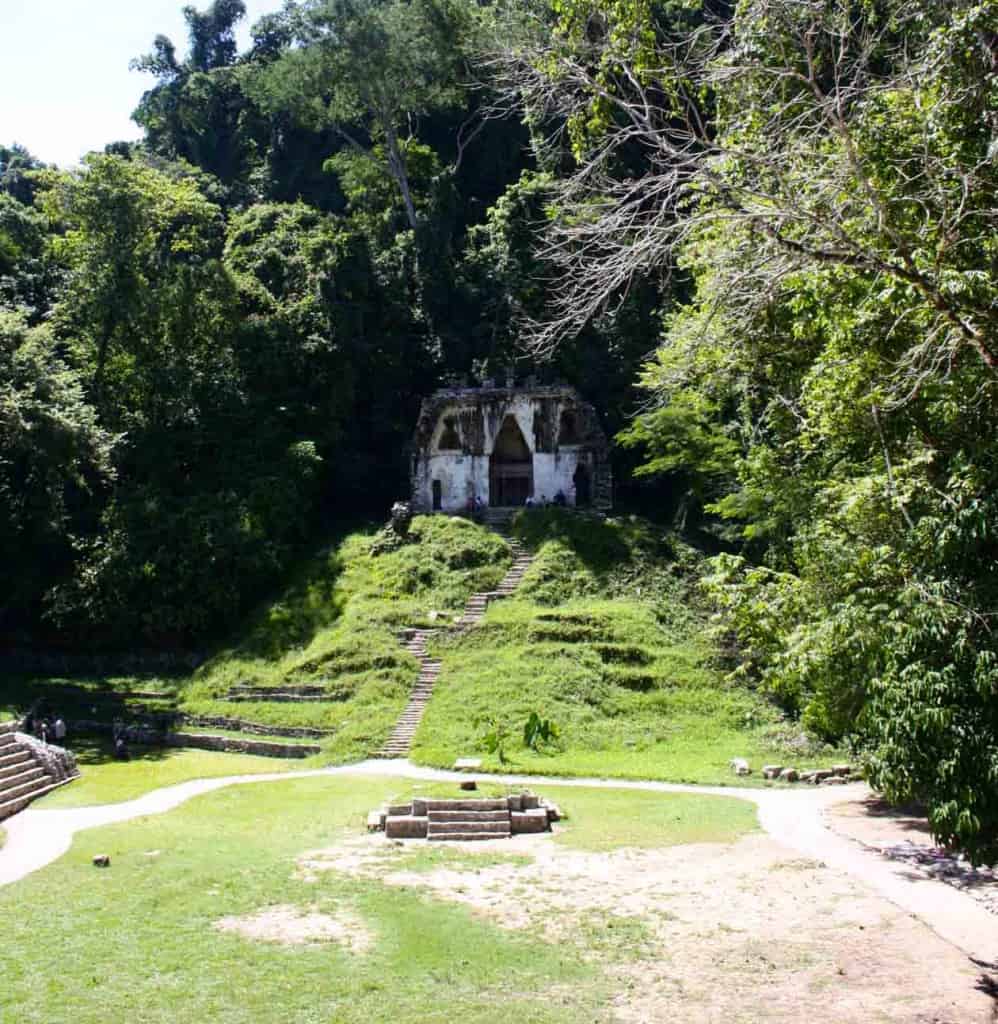
The next structure directly across from the Pacal’s tomb is simply called The Palace. The building was constructed and modified over a period of 400 years. It too is an unusual structure with its distinct tower appearing more Chinese than Mayan. The Palace is a labyrinth of courtyards, small rooms, stairways and long corridors. It has unusual features including steam baths, urinals and an early system for running water; bolstering the claim that this was King Pacal’s residence and not just an administrative building for the empire.
The panels with hieroglyphic inscriptions, stucco decorations and paintings amaze you as you walk silently between rooms and galleries. Some even retain the traces of original colors. A painting we particularly admire is Pacal and his mother the Queen crowning him as a young king.
The tower, four stories above the palace, was built as an observatory for the ruling and religious class to view the skies and in particular the winter solstice when the sun sets directly over Pacal’s Palace of the Inscriptions.
We continue walking and admiring the various buildings; over hills and small river. The only sounds are the clicking of our cameras and our footsteps as we discover another building or mural. We wave frantically to each other without voices in case we disturb the fragile past.
Readers note: Palenque has over 500 hundred structure and covers an approximate area of ten square miles. Only 34 structures are “discovered and open for viewing. These 34 priceless structures can take a few days or a few hours to discover depending on your interest. The surrounding lumps and hills are likely another building or palace revealing more secrets and history of the Mayans
Every time you visit Palenque you find something different or a new monumental archeological discovery takes place. You are never finished and we find we are drawn to the ancient site every time we drive toward or the Yucatan Peninsula or visit Chiapas. Palenque is a quiet and personal journey, a pilgrimage to honor the Gods and to reflect on creation, art, politics, daily life and death. Visit Palenque often to nourish your soul.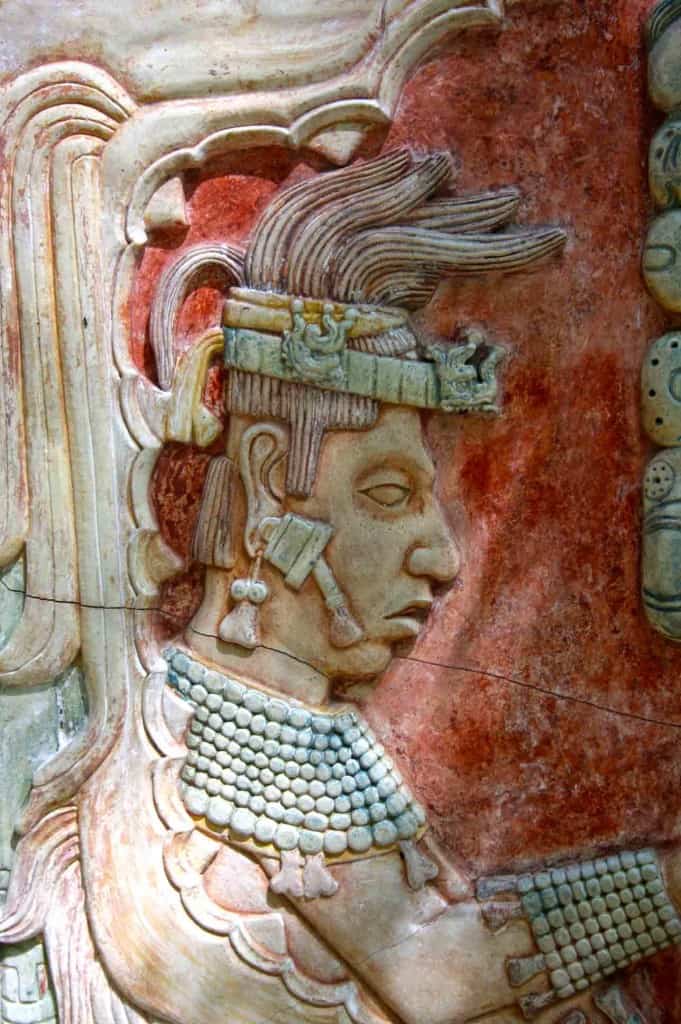
Getting To Palenque
You can fly into Villahermosa, Campeche or Cancun and take a variety of buses to the town of Palenque. We recommend the first class busses with washrooms, movies and music
To drive to Palenque from Villahermosa Tabasco or Campeche, Campeche, take Highway 186. Clear signs mark the turn to Palenque to the South.
The Archeological Site is only 6.5 kms by car. Taxis with low rates frequent the area.
The site is open daily from 8am to 6 pm. The Museum at the base of the site and adjacent to the alternative entrance is worth the visit.
Hotels
Camping
There are numerous places to tent or hammock camp in the area. RV’s can enjoy two different Trailer Parks; Los Leones (for larger rigs) and the Maya Bell. While most residents sport tattoos or dreadlocks at the Maya Bell, you will enjoy the restaurant in the evenings with inexpensive food and beverages. Often there is impromptu music. You can often hear Howler Monkeys cry in the night.
Maya Bell, Chiapas
Los Leones
Admission – 59 pesos
Palenque, Chiapas
Palenque, Chiapas – Planning Your Visit
Palenque, Chiapas – Historical Notes
Palenque, Chiapas – Introduction to the Walking Tour
Palenque, Chiapas – Interactive Map
Palenque, Chiapas – Temple of the Skull
Palenque, Chiapas – The Temple of the Red Queen
Palenque, Chiapas – The Temple of the Inscriptions
Palenque, Chiapas – The Great Palace
Palenque, Chiapas – The Aqueduct and Waterworks
Palenque, Chiapas – The Plaza of the Crosses
Palenque, Chiapas – The North Group
Palenque, Chiapas – The Ball Court
Palenque, Chiapas – The Temple of the Count
Palenque, Chiapas – The Museum